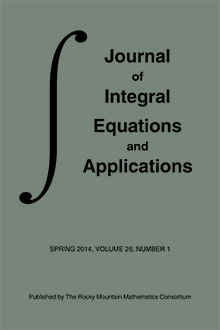Abstract
One of the cornerstones of the theory of linear integral equations is the establishment of properties of the resolvent kernel. This theory has consequences in the study of a wide class of nonlinear integral equations, including those of the form \[ x(t)=f(t) -\int^t_0 C(t-s) h(s,x(s))\,ds, \tag{1} \] that commonly arise in applied mathematics. Using such a theory, in this work, we study conditions on (1) that relate to the existence of a solution $x$ that is non-negative on $[0,\infty)$. In the classical literature, one finds amongst sufficient conditions for non-negativity of $x$ on $[0,\infty)$, the requirements \[ \textnormal{$f(t)>0$ on $[0,\infty)$, $C(t) >0$ on $(0,\infty)$, and $\frac{f(T)}{f(t)}\leq \frac{C(T-s)}{C(t-s)}$} \] when $0\leq s \lt T \lt t$, for $t\in [0,\infty)$. Our work begins here when we show that this assumption implies that $\int^{\infty}_0 f(t)\,dt = \infty$ whenever $\int^{\infty}_0 C(t) \,dt =\infty$. This motivated the conjecture that, when $\int^{\infty}_0 C(t)\, dt =\infty$, then a necessary condition for the existence of a non-negative solution is that $\int^{\infty}_0 f(t) dt =\infty$. The proof of that conjecture is the main result of this paper.
Finally, we point out that, while (1) seems very special and possibly of narrow interest, that is not the case. Equation (1) is of prime importance in establishing properties of the resolvent kernel for scalar equations arising in mathematical physics from areas as diverse as heat problems and problems in turbulence as well as fractional differential equations of both Caputo and Riemann-Liouville type. There is a myriad of real-world problems modeled by the latter two types, and such studies are among the very active in mathematics today.
Citation
T.A. Burton. "A necessary condition for a non-negative solution of an integral equation." J. Integral Equations Applications 27 (3) 367 - 374, FALL 2015. https://doi.org/10.1216/JIE-2015-27-3-367
Information





